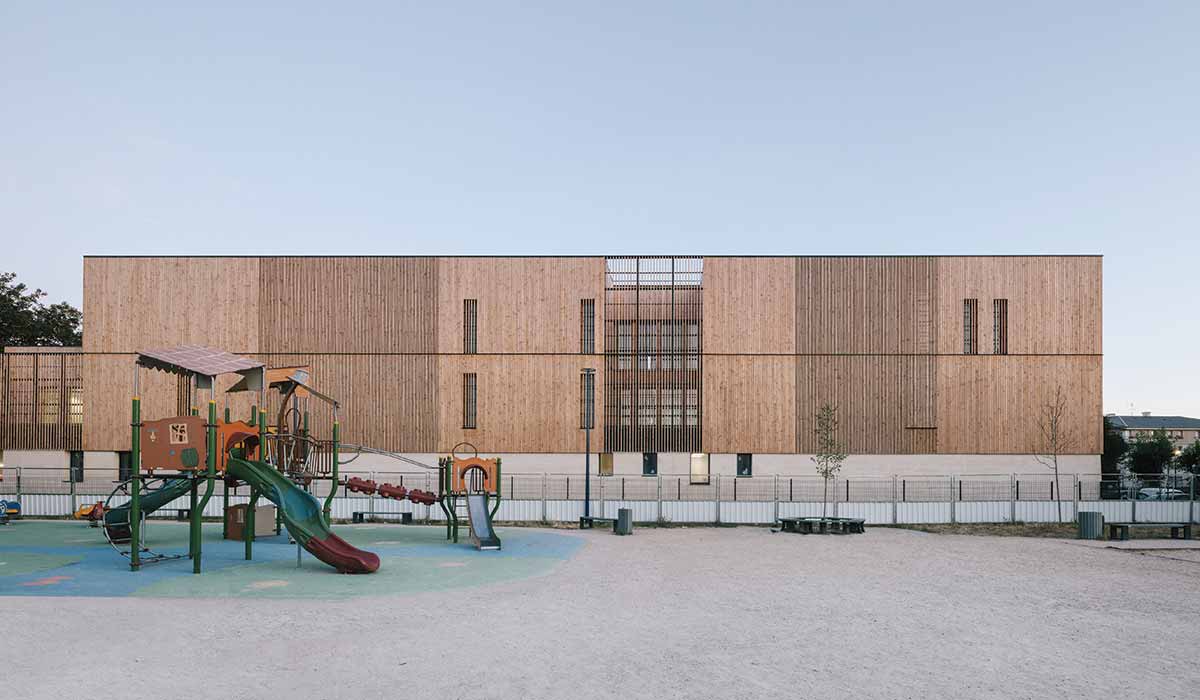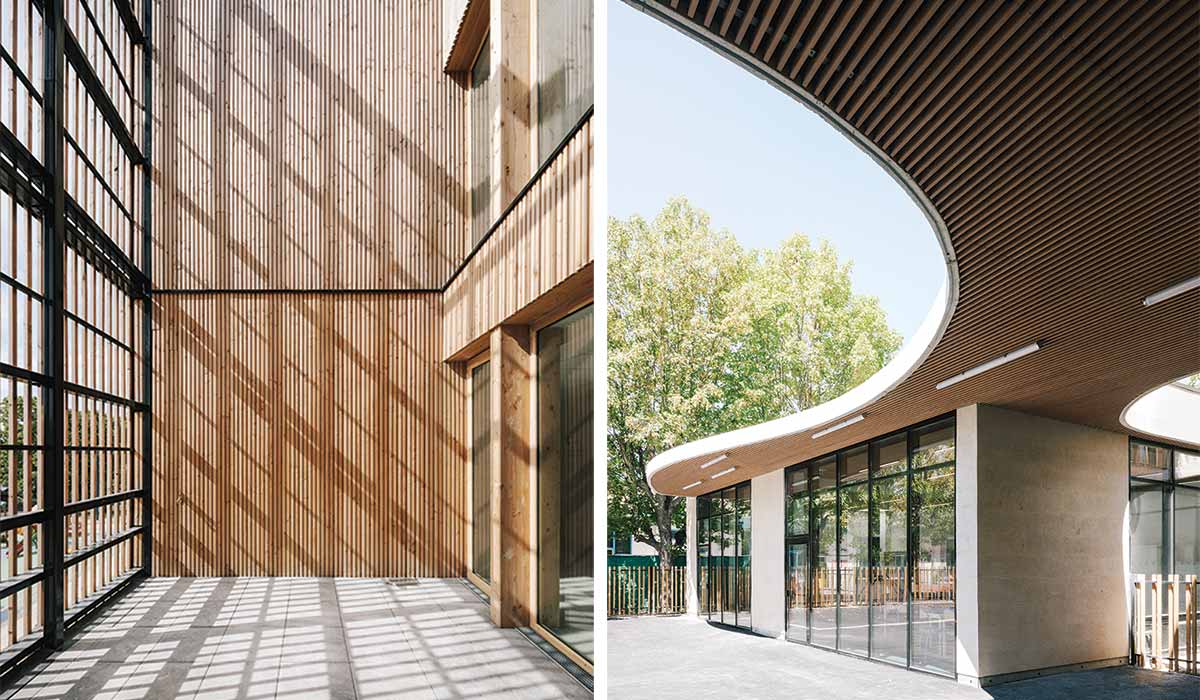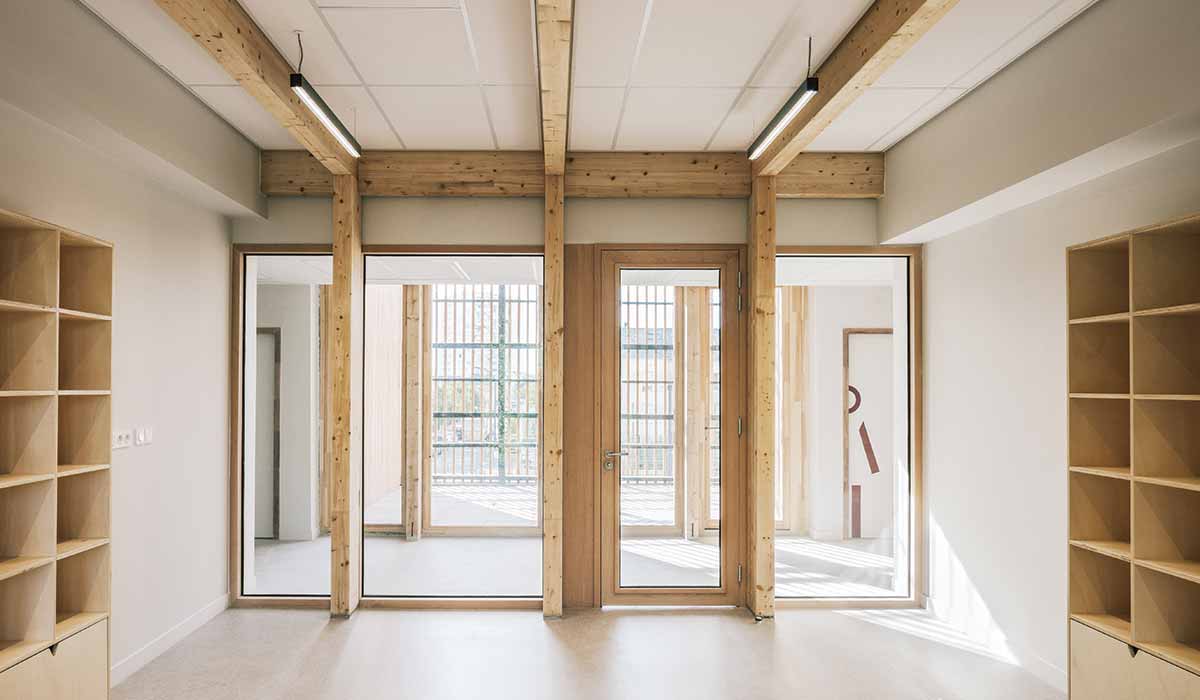
Delivered in 2020, this brand-new elementary school with a floor area of 2100 m² consisting of 10 classes, a leisure centre, and a school restaurant, pays particular attention to routes and views between its architectural volume and the lighting sources. Two double-height patios draw natural light and spatiality into the circulation patterns. These spaces are punctuated with custom-made fixed furnishings that integrate storage and benches. The scale of the building, the flexibility of the interior layouts, and the choice of colors make it easier for children to navigate.
Furthermore, the visible wooden post / beam structure is an important intention of the project and illustrates an environmental example that raises the awareness of young and old alike.
Located in the heart of a dense residential neighborhood surrounded by wooded areas, the school takes the form of two wooden quadrilaterals placed on a limestone plinth, largely glazed on the courtyard side, and closed at the rear on the public space side. It is established in an L-shaped composition to provide optimal free floor space, on one hand, and to create a boundary on one side.

The building is oriented towards the heart of the school complex, isolating itself as much as possible from all external nuisances. The solid wood structure sits on a masonry plinth and is located in front of the existing kindergarten. The project also provides classrooms designed with the most favorable orientation to the west and onto the playground.
A largely glazed ground floor forms a “center of life” - it is a place of education, social life, and interactions. In the interior courtyard, the building opens generously to reveal the study rooms, places of relaxation, and recreation. Additionally, the courtyard integrates the ground floor functions and connects the kindergarten with the new elementary school. The playgrounds of the two schools are isolated by way of a fence and a plant line.
Four major hubs on the ground floor include the reception hall which serves the floors, the administrative center, and the food service area; the leisure centre, located on the dividing line, connects with the nursery school; the multifunctional room and its storage room are located opposite the leisure center and the two spaces are separated by an open-air educational garden. The restaurant opens onto the reception hall and the playground, with a layout that reduces delivery routes and limits truck access to the playground.

The choice of materials was executed in line with thermal and environmental objectives. The two elevation levels are designed in wood. Dry-sector prefabrication facilitates speed and precision. Concrete construction is limited to the ground floor, the infrastructure, the stairwells, and the elevator, while the stone base is a relevant response to express and protect the building.
Photo credit: Charly Broyez
Source: V2.com















